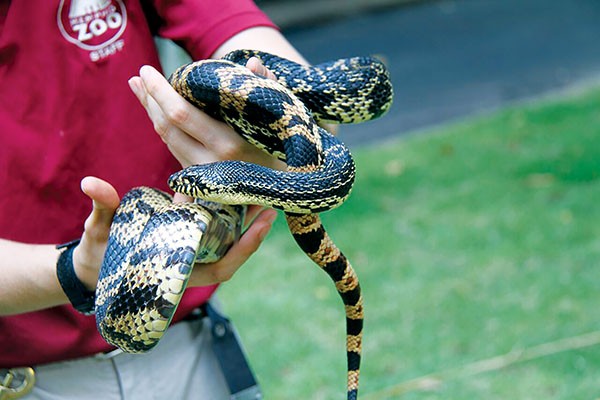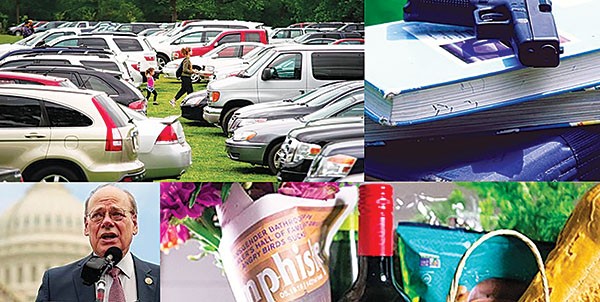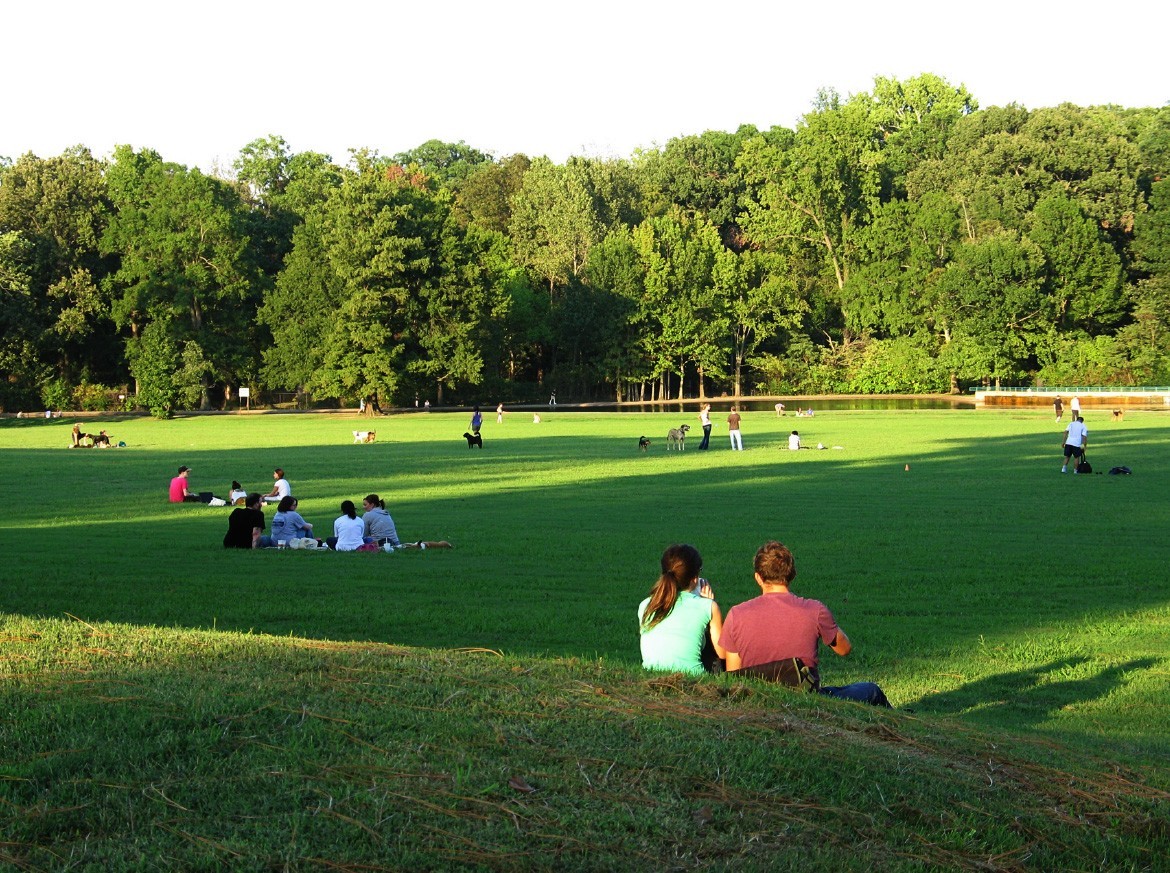
The size of the parking spaces in the Memphis City Council’s resolution on the Memphis Zoo parking lot will swallow more than an acre of the Overton Park Greensward, according to an analysis offered this weekend by the local chapter of the Sierra Club.
The resolution ended nearly two years of fighting on the Greensward issue and promised to end the zoo’s use of the grassy field for overflow parking by 2019. The resolution was a slate of conditions and proposals agreed upon by zoo officials and the Overton Park Conservancy (OPC) during nearly six months of private mediation sessions ordered by Memphis Mayor Jim Strickland.
Council member Reid Hedgepeth added another condition to the resolution during the council’s debate on the issue in July. He wanted the parking spaces in the newly reconfigured zoo lot to be 10 feet by 20 feet, the same as in Tiger Lane.
The space size is twenty-nine square feet larger than the zoos current spaces, which are nine feet by 19 feet.* The cumulative effect of enlarging all 415 new spaces in the lot to the larger size will take 1.14 acres of the Greensward, the Sierra Club Chickasaw Group said this weekend. The group said that is 11 percent more land than needed for the project.
“Changing the size of each parking space is an attempt to solve a problem which doesn’t exist,” wrote Dennis Lynch, transportation chairman of the Sierra Club Tennessee Chapter. “There is no public ‘uproar’ or even a quiet plea to make parking spaces larger. There is no evidence that the public wants larger parking spaces. Thus, there is no need to change the sizes of the individual parking spaces.”
Members of a steering committee assembled to make the council’s resolution into a reality discussed the parking space size in a meeting last week. Tina Sullivan, executive director of the OPC, said she’d be willing to push the project’s completion date (and, thus, the end of Greensward parking) if the firm hired to design the new lot would consider the smaller parking space size.
However, John Conroy, a steering committee member representing the zoo, said the “zoo will not entertain changes to the [council] resolution.”
Still, Lynch, in his analysis, delivered 15 reasons the smaller space size should be considered. (See below.) Lynch said, based on his review, “it seems hard to justify larger parking spaces which would take over 1 acre of valuable space from a beloved community resource — Overton Park — to give that space to another community resource — the zoo.”
Lynch asked that the design consultants consider two plans, one with the larger spaces and another with the current-sized spaces.
Sullivan was told last week that shrinking the space sizes would require another vote by the council, a process that would take a least six weeks. That, she was told, would add time to the project and reviewing the smaller space size would likely add cost to it as well.
The Commercial Appeal, it seems, is tired of the negotiations on the council plan. In an editorial headlined “Bickering over Memphis Zoo parking must come to a halt,” which was published Monday, the newspaper opined that both sides “need to act like reasonable adults,” understand that not everyone gets what they want in a compromise, and focus on solving the problem.
“We fully realize why the zoo is concerned about anything that threatens to chase away visitors, and that park advocates are serious about protecting public green space,” the anonymous editorial writer said. “Forgive us for using a cliched phrase, though: While the parking dispute continues, this city is dealing with other issues that impact far more Memphians than the size of a parking space – violent crime, budget issues and poverty top the list.
“Please stop the bickering, act like reasonable adults and make the compromise work.”
Three design firms will vie for the contract to design the new parking lot for the zoo. One firm will be selected probably by the end of January. Money for the project must be in hand from OPC and the zoo by early February.
A city official said last week, though, that the final price tag on the project is not known. Projections last year put the figure at $3 million, a cost to be split evenly between the park and the zoo.
Here’s Lynch’s 15 reasons small parking spaces should be considered in the reconfigured zoo lot:
1. 75% of the cars parked in Zoo lots are small or medium-sized cars.
2. The existing 9′ x 19′ spaces are large enough to accommodate all cars which visit the Zoo, even extra large cars. 3. The City Council’s resolution would cause the new Zoo parking to take 11% more space than needed.
4. The city council’s resolution needs 1.14 extra acres just to address the larger parking space size.
5. The 10 foot by 20 foot parking spaces at Tiger Lane accommodate tailgating — not a common practice at the zoo.
6. Parking spaces at other tourist venues around the city are smaller than 10 foot by 20 foot.
7. There is no public “uproar” or even a quiet plea insisting that zoo parking spaces be larger.
8. The Memphis & Shelby County (Unified Development Code), defines spaces to be 9 feet by 19 feet minimum but allows smaller for compact cars.
9. Given the distribution of vehicle sizes at the zoo, it may even be worth considering a section for smaller cars.
10. The Traffic Engineering Handbook, 5th edition, specifies a “minimum size” of parking spaces, but emphasizes that sizes should be based on the nature of the usage (type of activity) and the physical environment (space available and constraints).
11. The city, zoo, OPC, and the community should work together to meet the parking need, but also to protect the Greensward. Specifications which increase the total acreage unnecessarily are in conflict with this objective.
12. Encroachment into the Greensward is the root cause of the current problem. This project should make every effort to avoid a solution which encroaches. “Appropriately-sized” parking spaces help to meet the objective.
13. With the coming “invasion” of autonomous cars, many people will be dropped off, thus, reducing the need for prime parking spaces near the zoo’s front entrance.
14. Philosophy & Economics — “Land is not free.” The tightly constrained land in the park and near the zoo means that every fraction of an acre must be carefully metered out.
15. “The High Cost of Free Parking” (Shoup, Donald; American Planning Association; 2011) clearly recommends a shift from minimum parking requirements to parking prices which are used to control demand, and encourage other modes of travel.
*edited from the original post to reflect a math error.
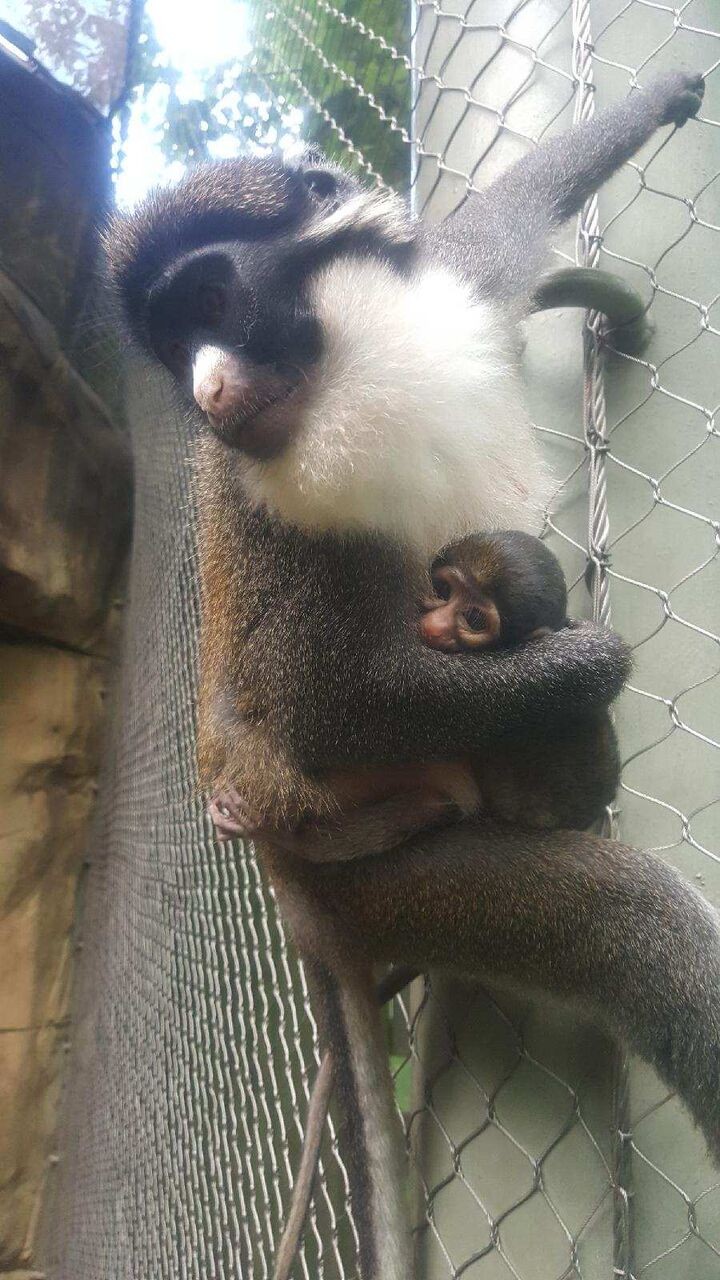
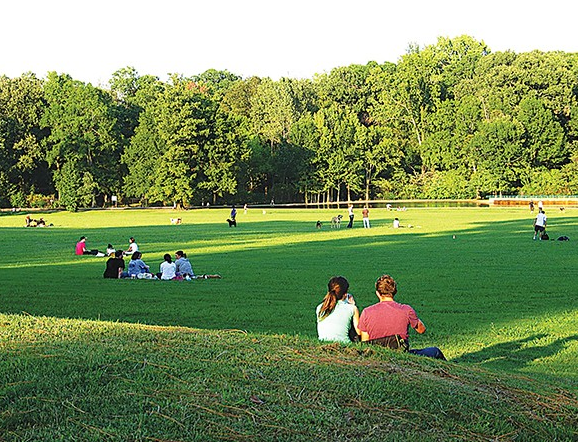
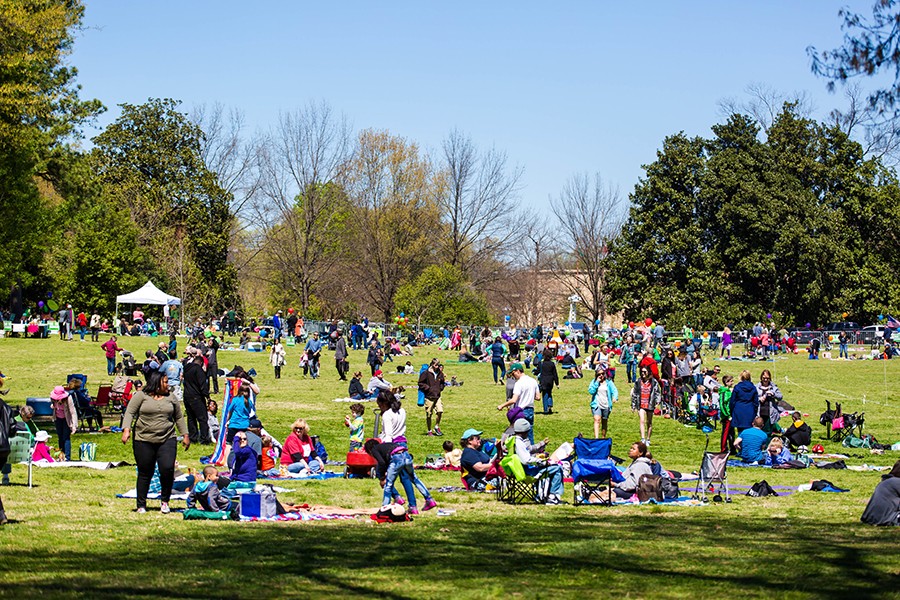 Overton Park Conservancy
Overton Park Conservancy 

